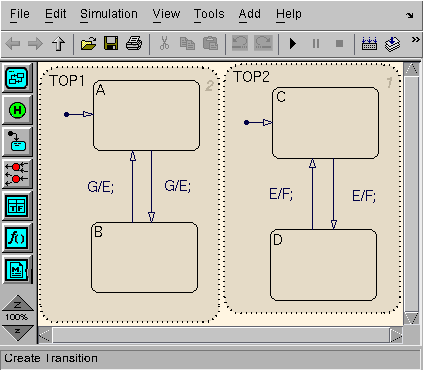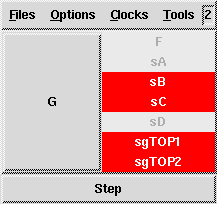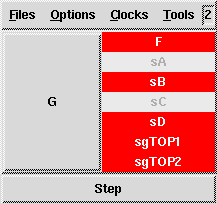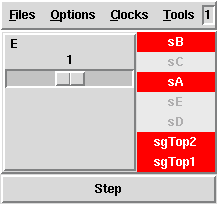
Figure 2: A Stateflow chart requiring event broadcasts



Figure 2 shows a Stateflow chart (Events3.mdl) with two parallel states TOP1 and TOP2. Here, state TOP2 receives events from TOP1 but is executed before TOP1 according to the priorities in the chart. If we na´vely translate this chart and send event G to it we get:
Figure 2: A Stateflow chart requiring event broadcasts

-ess <n> option where <n> is
the depth of the event stack we require.
For this chart we can set the event stack size to 2 and we get the following:
-ess parameter should not be set to more than about 4.
Charts which require event stacks deeper than this should be redesigned.To trigger this mechanism use the
Figure 3: A chart requiring event sending
-sends option.
Figure 3 shows a chart which uses sends
(Events5_docs.mdl), the resulting
Luciole display is as follows:


